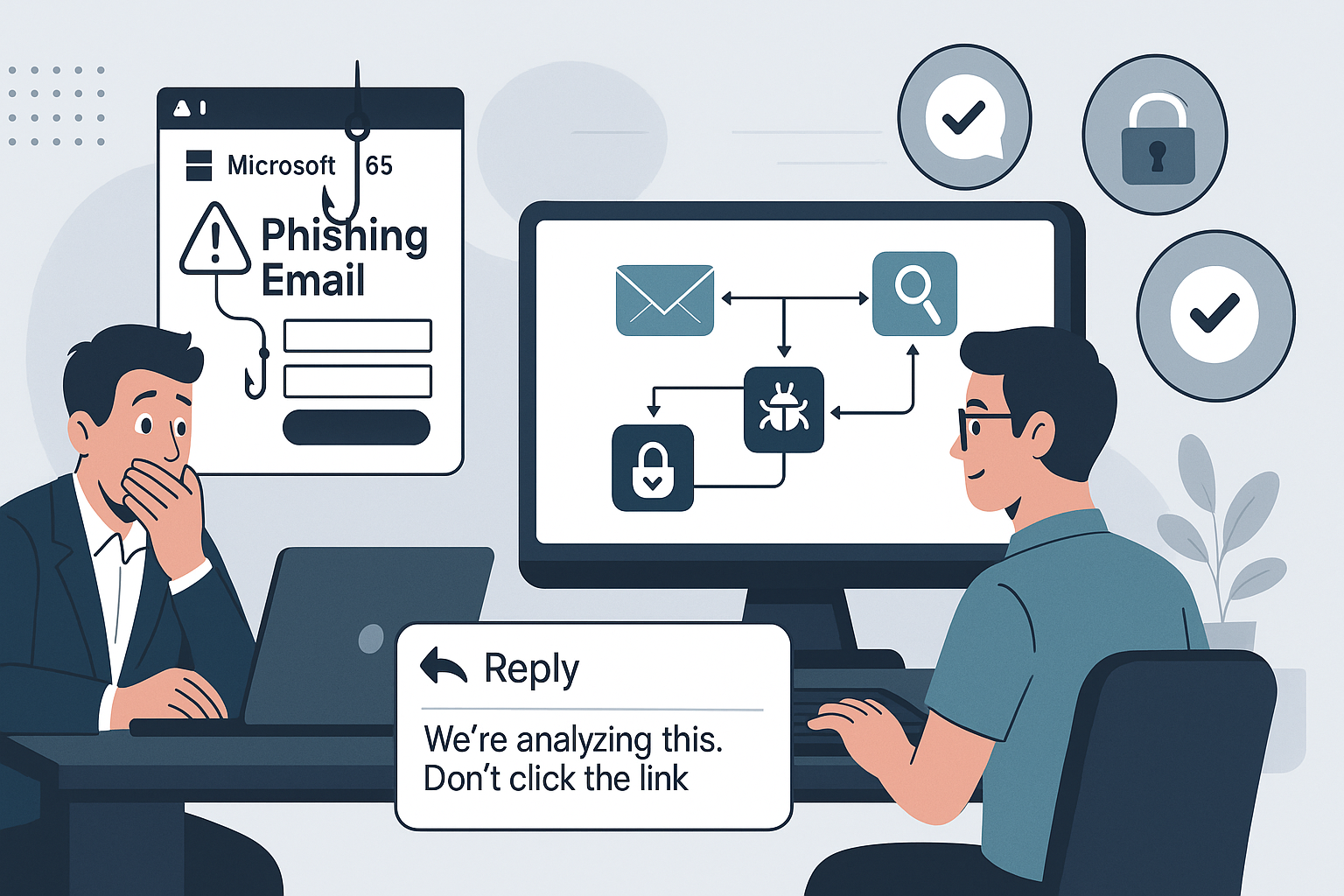Cybersecurity disasters don’t always begin with elite hackers or zero-day exploits. Sometimes they begin with… email.
That was the case for a growing regional law firm. One Monday morning, their IT team was hit with a tidal wave of alerts: dozens of employees had clicked on a fake Microsoft 365 login link. Some even entered their credentials before realizing it was a scam.
The firm’s inboxes exploded. Helpdesk tickets piled up. The security team was drowning in chaos. Everyone wanted to know the same thing: “Was my account compromised?”
The Hidden Problem
Like many organizations, the firm relied on employees to report phishing emails by forwarding them to IT. The trouble was:
- Many people forwarded after clicking.
- The SOC analysts had to manually sort through screenshots, email headers, and attachments.
- By the time they confirmed which accounts were at risk, attackers had already tried logging into some of them.
The firm didn’t lack security tools—they had endpoint protection, firewalls, and a SIEM. What they lacked was a workflow to deal with phishing fast.
Enter n8n
One security engineer decided to try something scrappy before management signed off on another expensive “phishing response platform.” He built an n8n workflow to automate the drudgery:
- Trigger: n8n monitored a special inbox (phishing@company.com).
- Parse: Every incoming email was automatically scanned—n8n extracted headers, links, and attachments.
- Analysis:
- If a URL matched threat intel feeds, n8n flagged it.
- Attachments were uploaded to VirusTotal for automated checks.
- Suspicious sender domains were added to a blocklist.
- Action:
- Users who forwarded phishing emails received an instant auto-reply: “Thanks—we’re analyzing this. Don’t click the link.”
- If credentials might have been compromised, n8n triggered a password reset in Active Directory and sent the user a reset link.
- All results were pushed into the SIEM for visibility.
- Alerting: Critical cases sent a Slack message directly to the SOC channel with a summary of the findings.
The Impact
What used to take hours of manual sifting now happened in minutes. Instead of being paralyzed by a phishing storm, the team had a clear, automated triage pipeline.
- The average phishing response time dropped from 3 hours to 12 minutes.
- The number of successful logins with stolen credentials plummeted to zero.
- Employees felt safer knowing their reports were taken seriously and handled instantly.
And the kicker? The solution cost nothing more than a weekend of tinkering plus the existing n8n server license.
The Bigger Lesson
The law firm’s story is proof that cybersecurity resilience isn’t always about buying shinier tools. Sometimes it’s about weaving the tools you already have into a smarter workflow.
n8n didn’t stop phishing emails from landing. It didn’t replace the SIEM. What it did was remove the bottleneck between “employee clicks” and “security team responds.” That was the real vulnerability all along.
That’s how a law firm turned a phishing storm into a case study in automation wins—not by writing a bigger check, but by letting n8n play the quiet hero in the background.




